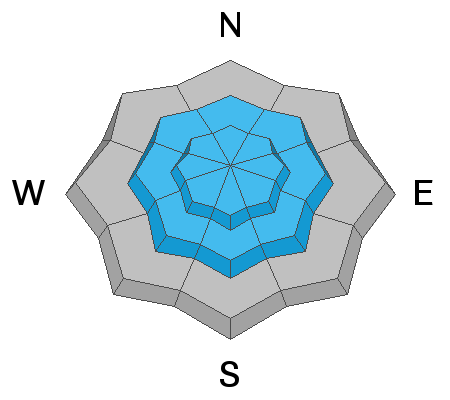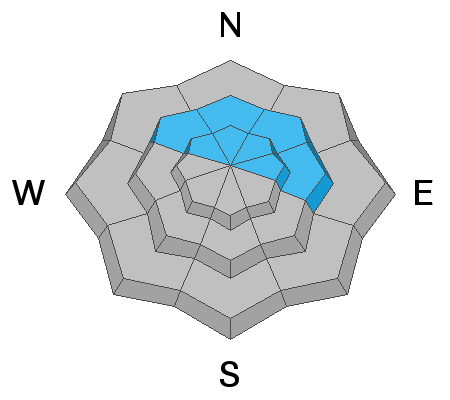Currently, mountain temperatures are in the upper teens F. A trace to 2" of snow has fallen since Thursday afternoon. Winds are out of the west/northwest and wind speeds are very elevation-dependent. At 11,000' winds are averaging in the 30's mph, with gusts in the 40's and 50's mph. But drop elevation and wind speeds diminish, averaging in the teens with gusts in the 20's mph.
Storm totals from the New Years storm include:
- Park City Ridgeline 9" snow with 1" water
- Upper Big Cottonwood 18" snow with 1.8" water
- Mid Big Cottonwood 10" snow with 1" water
- Little Cottonwood 22" snow with 2.5" water
For today, expect partly cloudy skies with gradual clearing as high pressure briefly moves into our region. Temperatures will warm into the 20's and low 30's F. Winds will be out of the northwest remain strongest at the upper elevations, gusting into the 40's mph at 11,000'. Drop elevation and wind speeds will be much more moderate, with exposed ridges averaging in the teens with gusts in the 20's mph.
Our
Week In Review which summarizes the weather and avalanche activity for this past week has been published.
Three remotely-triggered slides were reported from the backcountry on Thursday:
- Butler Fork 9300' N aspect 12" deep 30' wide running an estimated 150-200' (
observation)
- Tuscarora 10,400 SE aspect 14" deep 40' wide (
observation)
- Little Water Peak 9300' SE aspect 12-16" deep 60' wide running 250' vertical [photo below] (
observation)
These avalanches were on wind-loaded slopes, failing at the new snow/old snow interface.
Check out all of our observations
HERE.













